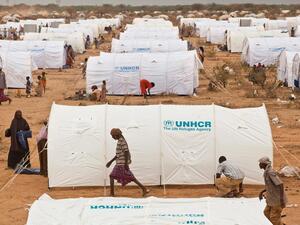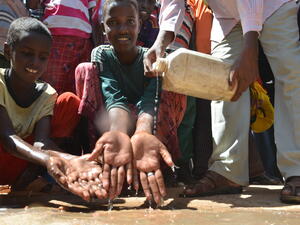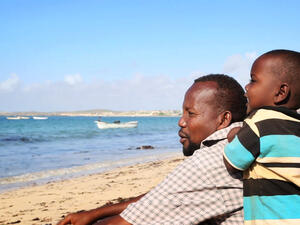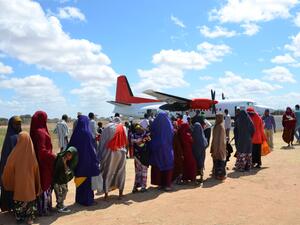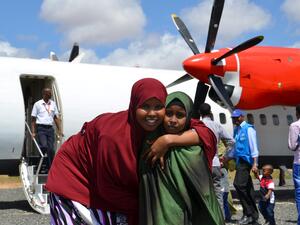Kenya: Government and UNHCR working together to improve screening process for incoming Somalis
Kenya: Government and UNHCR working together to improve screening process for incoming Somalis
A UNHCR team is expected to travel this morning to Liboi, on the Kenya/Somalia border, to arrange for the transfer of an estimated 2,000 Somali refugees reported to be waiting there after a suspension in shuttling them to our camps at Dadaab. We hope to resume in a few days. We have been monitoring the situation in Liboi following the suspension request by the Kenyan government in mid-October so we could set up a more efficient system of screening and registration of newly arrived refugees. This was necessary when it became evident that there were Kenyan nationals presenting themselves as refugees. There were also refugees already registered at the Dadaab camps posing as new refugees with the aim of receiving multiple registration cards and consequently more assistance. Although the number of false refugees was small compared with the number of genuine new refugees, we agreed with the government that the system needed to be reviewed to ensure that the limited available resources are given to those who are genuinely in need. We now expect to have more government involvement in the screening and registration process. They will register all new arrivals and cross-check their information against the country's database for people already registered. UNHCR will also register the refugees and take their fingerprints, which will eventually be matched against our own database of registered refugees.
Last Wednesday, a delegation of government officials and UNHCR staff from Nairobi travelled to Dadaab and Liboi to assess the situation there. An agreement was reached with the government to allow the asylum seekers at Liboi to be transferred to the Dadaab camps. The government assured UNHCR that it will continue to honour its international obligations by granting asylum to refugees. The delegation also noted that there was a need to improve surveillance along the border to ensure that the civilian nature of the camps is maintained.
Border officials in Liboi told the delegation that the arrival rate had dropped to about 300 people a day from a high of over 1,000 three weeks ago. Refugees, however, said people were being prevented from reaching the border by the Somali Islamic Courts Union. In addition, heavy rains had made many roads impassable.
In Dadaab, UNHCR continues to expand existing facilities to accommodate new refugees. The Dadaab complex is composed of three camps, which now have more than 50,000 refugees each - well beyond the recommended standard of 20,000 per camp. You'll recall the UN announced a flash appeal last week for $35 million for six months to handle the new influx.
Since the beginning of the year, some 32,000 Somali refugees have arrived in Kenya, pushing the total number of refugees in the three Dadaab camps to 160,000.


